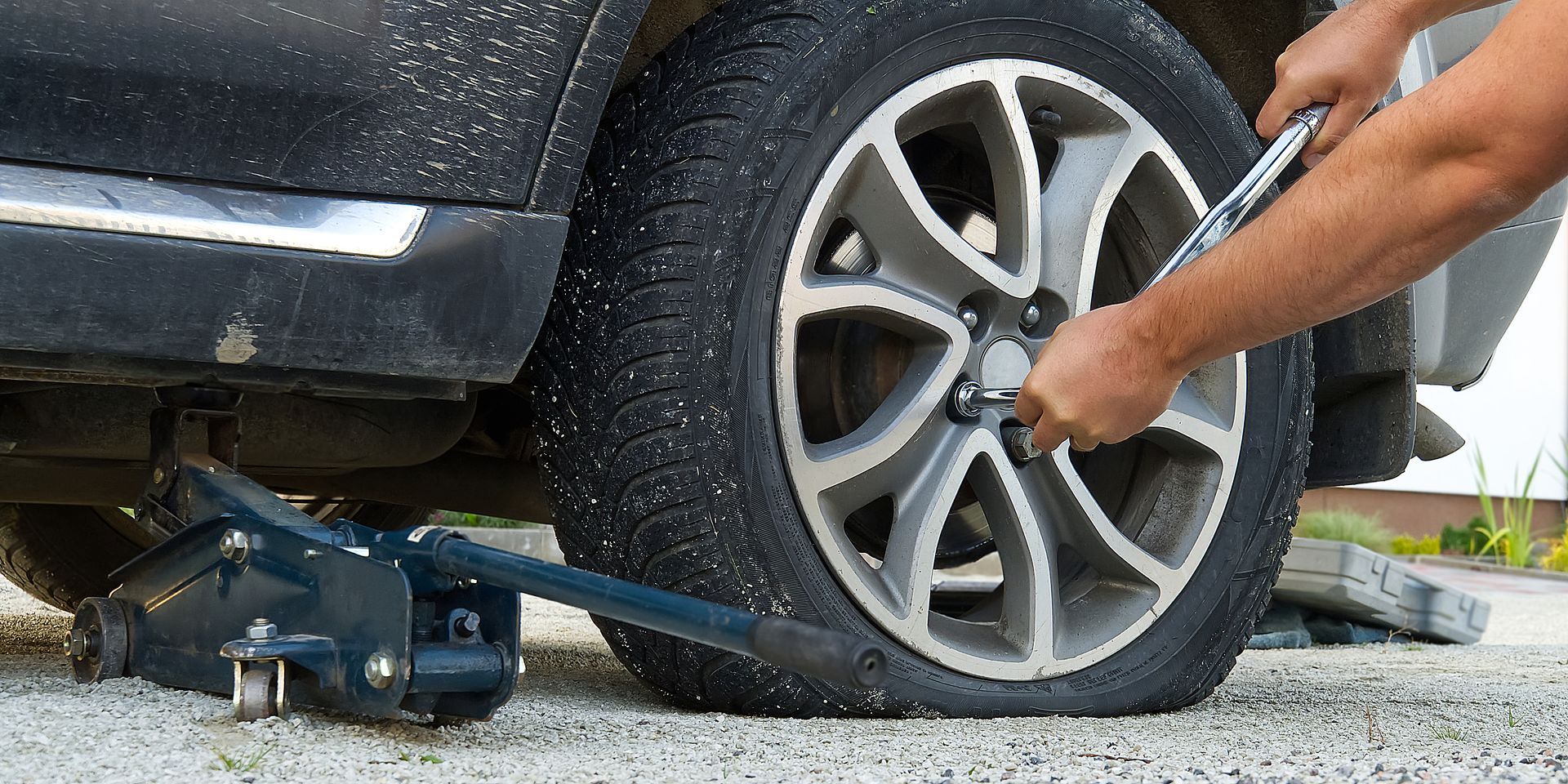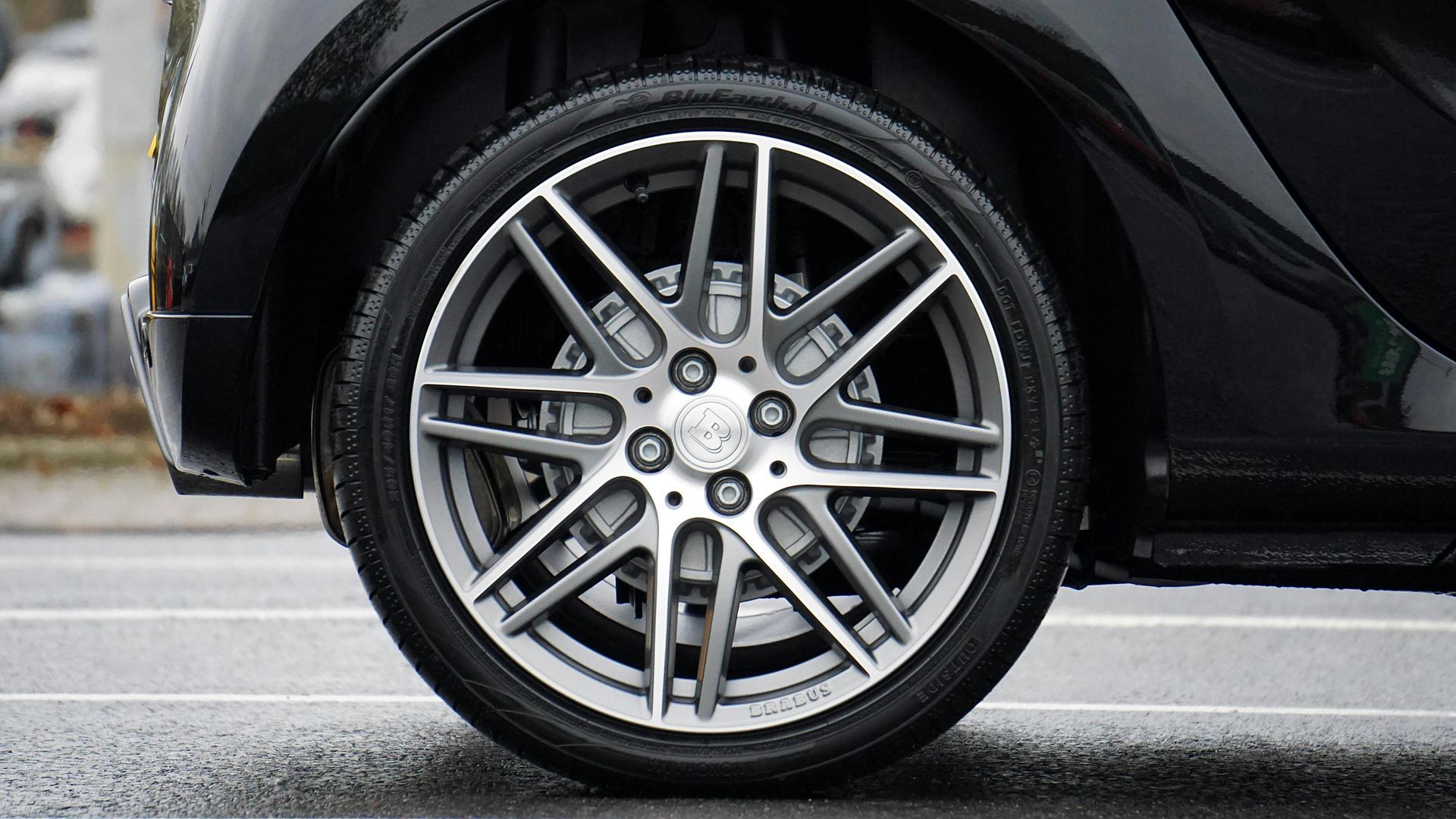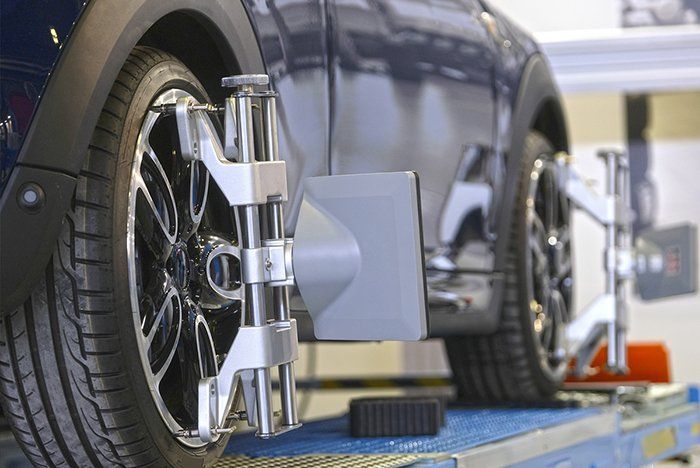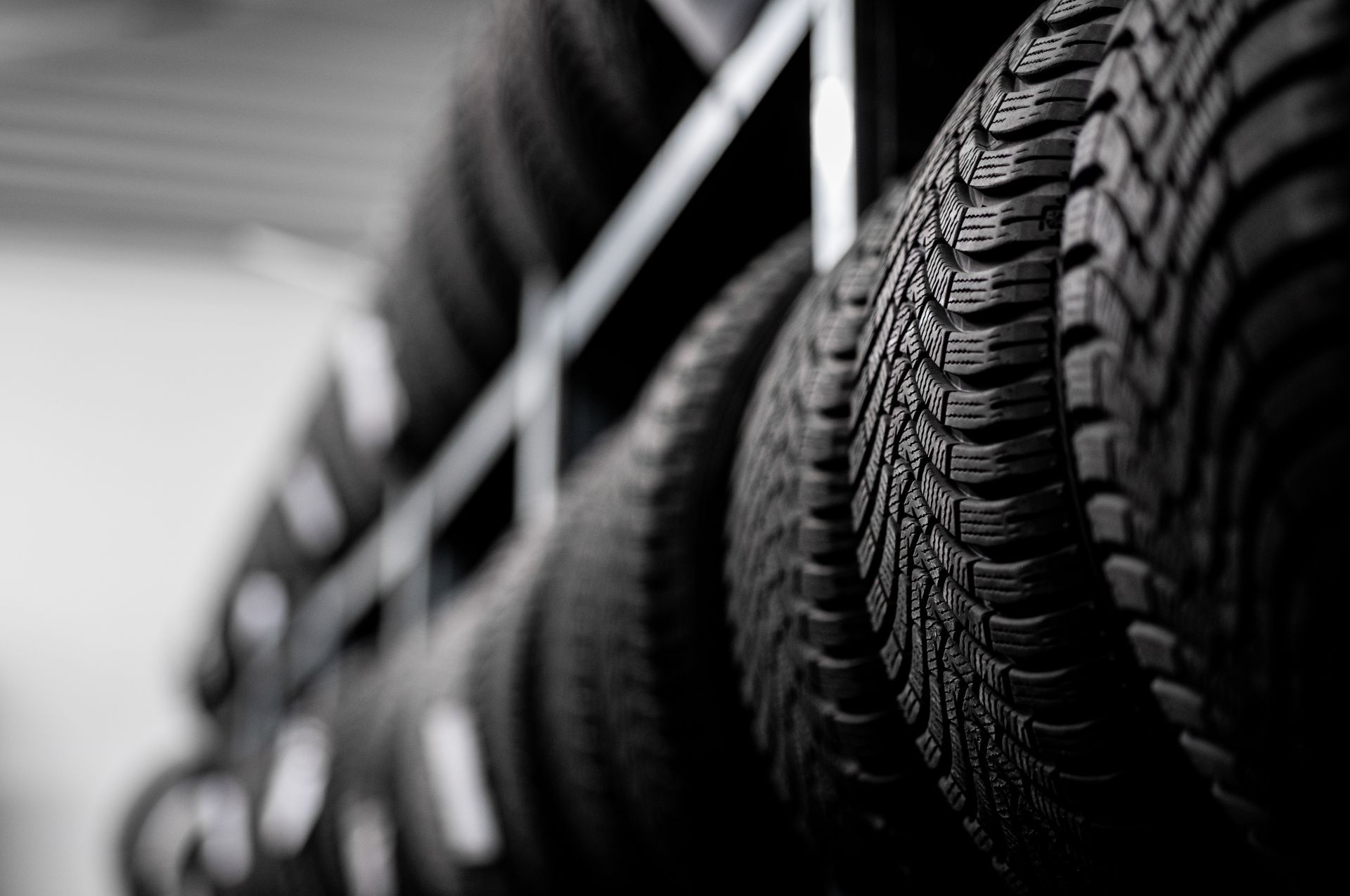Knowing when to replace or buy new tires is crucial for maintaining vehicle safety and optimal performance. Regular inspection of your tires is essential to ensure they are in good condition. One important factor to consider is the tread depth of your tires. If the tread depth is at or below 2/32nds of an inch, it's time for a replacement. Additionally, tire age is another crucial consideration. Tires should be replaced every six to 10 years due to material degradation.
Signs that indicate the need for new tires include uneven wear, defects, and changes in performance. Pay attention to any vibrations, lack of traction , or increased stopping distance, as these could be signs that it's time for new tires. When buying new tires, it's important to choose the right type based on your intended use. All-season, winter, and all-weather tires each have their own unique features and benefits.
There are several factors to consider when shopping for tires. Traction is a critical aspect, as it determines the tire's ability to grip the road in different weather conditions. The treadwear rating indicates how long the tire is expected to last, with a higher rating indicating better durability. Temperature resistance is another important consideration, as it affects the tire's performance in hot and cold weather. Lastly, warranty coverage provides added protection and peace of mind.
For electric vehicles , it is recommended to opt for tires with higher load ranges and higher inflation pressures. These tires are designed to meet the specific needs of electric vehicles , providing enhanced performance and safety.
When it comes to saving money on tires, timing is key. Shopping during retail sales periods can often result in significant savings. Additionally, be on the lookout for manufacturer's rebates and promotions, as these can help reduce the overall cost of new tires. Mobile Tire Repair companies like our team at Lugwrench Heros can help you in the Phoenix, AZ metro area.
Key Takeaways:
- Regularly inspect your tires for tread depth and signs of wear
- Replace tires with tread depth at or below 2/32nds of an inch
- Consider the age of your tires and replace them every six to 10 years
- Look out for signs such as uneven wear, defects, and changes in performance
- Choose the right type of tires based on your intended use
Signs for Replacing Tires
There are several signs that indicate the need for replacing tires, and it's important to be aware of them to ensure your safety on the road. Regular tire inspections and maintenance are key to identifying these signs early on. One of the most significant factors to consider is tire tread depth. If the tread is at or below 2/32nds of an inch (1.6 mm), it's time to replace your tires. Insufficient tread depth reduces traction , increasing the risk of accidents, especially on wet or slippery surfaces.
In addition to tread depth, tire age is another crucial factor. Over time, the materials in tires degrade, affecting their performance and safety. It's generally recommended to replace tires every six to 10 years, even if they have sufficient tread depth. Checking the sidewalls for cracks, bulges, or other defects is also essential. These signs indicate potential tire failures, which could lead to blowouts while driving, causing accidents and damage to your vehicle.
Uneven wear patterns on your tires can also be indicative of the need for replacement. If you notice excessive wear on the inside or outside edges, it may be a sign of alignment issues or improper tire inflation. Both of these can significantly impact tire lifespan and performance. Additionally, changes in your vehicle's handling, such as increased vibrations or difficulty in maintaining control, should not be ignored. These may suggest tire issues that require immediate attention.
| Tire Wear Indicator | Description |
|---|---|
| Tread Wear Bars | When the tread wears down to the same level as these bars, it's time to replace your tires. |
| Penny Test | Insert a penny into the tire tread with Lincoln's head facing down. If you can see the top of his head, it's time for new tires. |
Tire Maintenance Tips:
- Regularly check tire pressure and adjust it as needed. Proper inflation helps maintain tire performance and extends their lifespan.
- Rotate your tires every 5,000 to 8,000 miles to ensure even wear and maximize their longevity.
- Keep an eye on your vehicle's alignment and suspension. Misalignment can cause uneven tire wear, affecting their safety and lifespan.
- Avoid overloading your vehicle, as it puts excessive stress on the tires, leading to premature wear and potential damage.
By paying attention to these signs for replacing tires and following good tire maintenance practices, you can ensure your safety on the road and get the most out of your tires. Remember to always consult with a professional if you have any doubts about the condition of your tires.
Factors to Consider When Replacing Tires
When buying new tires, there are several factors you should consider to ensure you make the best decision for your vehicle and driving needs. One of the most important considerations is the cost of tire replacement. It's essential to set a budget and choose tires that provide good value for money. Keep in mind that cheaper tires may wear out faster and need to be replaced more frequently, while higher-end options may offer better performance and longevity.
Another crucial factor to consider is tire lifespan. Tires should be replaced every six to 10 years, regardless of their tread depth, due to material degradation. As tires age, the rubber compound becomes less flexible, resulting in reduced traction and compromised safety. Checking the manufacturing date on the sidewall of the tire can help you determine its age and decide whether it's time for a replacement.
When selecting new tires, it's also important to think about your specific driving conditions and needs. Consider the type of tire that suits your intended use, such as all-season, winter, or all-weather tires. All-season tires are versatile and suitable for most conditions, while winter tires provide better traction in icy and snowy conditions. All-weather tires offer a combination of both, making them a popular choice for year-round use. Evaluate your driving habits and the climate in your area to make an informed decision.
Factors to Consider When Buying Tires:
| Factor | Description |
|---|---|
| Traction | Look for tires that provide excellent grip on various road surfaces, ensuring optimal safety and performance. |
| Treadwear Rating | Consider the treadwear rating to determine how long the tires are expected to last. Higher ratings indicate longer tread life. |
| Temperature Resistance | Check for the tire's ability to withstand heat and maintain stability at high speeds. This is especially important for vehicles that frequently travel at high speeds. |
| Warranty Coverage | Review the warranty offered by the tire manufacturer to understand what damages and defects are covered and for how long. |
For electric vehicles , it's essential to consider tires with higher load ranges and higher inflation pressures. Electric vehicles tend to be heavier due to the battery packs, so tires with a higher load range can handle the additional weight and provide better stability and control. Higher inflation pressures are also necessary to support the weight of the electric vehicle and ensure optimal performance.
To save money on tire purchases, it's advisable to shop during retail sales periods and take advantage of manufacturer's rebates. Many retailers and manufacturers offer discounts and promotions at certain times of the year, allowing you to get quality tires at a more affordable price. Additionally, be sure to compare prices and options from different sellers to find the best deal for your desired tire brand and model.
Choosing the Right Type of Tires
Choosing the right type of tires for your vehicle is essential for optimal performance in different weather conditions. Whether you're driving in hot summer temperatures, snowy winter conditions, or facing unpredictable weather, having the right tires can make a significant difference in your vehicle's handling and safety.
There are several types of tires to consider, including all-season, winter, and all-weather tires. All-season tires are designed to perform well in a variety of conditions, making them a popular choice for everyday driving. They provide good traction on dry and wet roads and offer a comfortable ride. Winter tires , on the other hand, are specifically engineered to excel in cold weather and snowy or icy conditions. They have a unique tread pattern and rubber compound that enhance grip and minimize slipping. All-weather tires are a hybrid option, combining the performance features of both all-season and winter tires , making them suitable for year-round use in regions with moderate winter conditions.
Features and Benefits of Different Tire Types:
| Tire Type | Features | Benefits |
|---|---|---|
| All-Season Tires | Good traction on dry and wet roads | Versatile for year-round use |
| Winter Tires | Enhanced grip in cold and snowy conditions | Improved safety and control |
| All-Weather Tires | Performance features of both all-season and winter tires | Suitable for regions with moderate winter conditions |
When choosing the right type of tires, consider the climate and weather conditions in your area, as well as your driving habits and needs. If you frequently encounter harsh winter conditions, investing in a set of winter tires can greatly improve your safety on the road. If you live in an area with mild winters, all-season or all-weather tires may be more suitable.
Additionally, it's important to consult your vehicle's manufacturer recommendations to ensure you select tires that are compatible with your specific make and model. By choosing the right tires, you can maximize your vehicle's performance, handling, and safety, providing peace of mind on every journey.
Factors to Consider When Shopping for Tires
When shopping for tires, it's important to consider various factors that will impact the performance and longevity of your tires. These factors include traction, treadwear rating, temperature resistance , and warranty coverage. Let's take a closer look at each of these factors to help you make an informed decision.
Traction
Traction is a crucial factor to consider when choosing tires. It refers to the tire's ability to grip the road surface, especially in wet or slippery conditions. Tires with good traction provide better control and reduce the risk of skidding or sliding. When shopping for tires, look for those with high traction ratings to ensure optimal safety and performance.
Treadwear Rating, Tread Depth to Replace Tires
The treadwear rating indicates the estimated lifespan of the tire's tread. It is represented by a number, with higher numbers indicating longer wear. When comparing tires, consider their treadwear ratings to determine how long they are likely to last before needing replacement. Keep in mind that factors such as driving habits and road conditions can also affect the actual lifespan of the tires.
Temperature Resistance
Temperature resistance refers to the tire's ability to withstand heat generated during driving. Tires with good temperature resistance are less likely to overheat and wear out quickly. This is particularly important for vehicles that frequently travel at high speeds or carry heavy loads. When choosing tires, look for ones with high temperature resistance to ensure durability and safety.
Warranty Coverage
Warranty coverage is an important consideration when shopping for tires. It provides protection against manufacturing defects and premature wear. When comparing tire options, check the warranty coverage offered by the manufacturer. Look for warranties that provide adequate coverage for a reasonable period of time, giving you peace of mind and potential cost savings in case of any issues.
| Factor | Description |
|---|---|
| Traction | The tire's ability to grip the road surface |
| Treadwear Rating | The estimated lifespan of the tire's tread |
| Temperature Resistance | The tire's ability to withstand heat generated during driving |
| Warranty Coverage | Protection against manufacturing defects and premature wear |
Considering these factors when shopping for tires will help you choose the right ones for your vehicle and driving needs. By prioritizing traction, treadwear rating, temperature resistance, and warranty coverage, you can ensure that your tires perform well and last longer, providing you with a safer and more enjoyable driving experience.
Tires for Electric Vehicles
Electric vehicles have specific tire requirements, and choosing the right tires can enhance their performance and safety. When selecting tires for your electric vehicle, it's important to consider factors such as higher load ranges and higher inflation pressures.
Due to the heavy battery packs in electric vehicles, tires with higher load ranges are recommended to handle the additional weight. These tires are designed to provide better durability and stability, ensuring a smooth and comfortable ride. Additionally, as electric vehicles often have instant torque and acceleration, tires with higher inflation pressures are needed to maximize efficiency and maintain optimal traction on the road.
To find the right tires for your electric vehicle, consult the manufacturer's recommendations or seek advice from a trusted tire professional. They can help you select the appropriate tire size, load range, and inflation pressure to ensure optimal performance and safety for your specific electric vehicle model.
| Benefits of Tires for Electric Vehicles | Features |
|---|---|
| Enhanced Performance | Designed for instant torque and acceleration |
| Improved Efficiency | Optimized for higher inflation pressures |
| Increased Safety | Higher load ranges for better stability and durability |
Investing in the right tires for your electric vehicle is essential for a smooth, efficient, and safe driving experience. By considering the unique requirements of electric vehicles and selecting tires with higher load ranges and inflation pressures, you can maximize the performance and longevity of your electric vehicle's tires.
Saving Money on Tires
Buying new tires doesn't have to break the bank - there are several ways to save money and still get high-quality tires. When it's time to replace your tires , consider shopping during retail sales periods. Many tire retailers offer special discounts and promotions during holidays and other sale events. Keep an eye out for these sales to take advantage of significant savings on your tire purchase.
In addition to retail sales, another way to save money on tires is by taking advantage of manufacturer's rebates. Manufacturers often offer rebates and incentives to encourage customers to purchase their tires. These rebates can range from instant cashback to gift cards or mail-in rebates. Be sure to check with the tire manufacturer or retailer for any ongoing rebate programs that could help you save money.
When shopping for tires, it's important to compare prices and features across different brands and models. Look for tires that offer a good balance of quality and affordability. While it might be tempting to always go for the cheapest option, keep in mind that investing in high-quality tires can provide better performance and longevity, ultimately saving you money in the long run.
| Tire Shopping Tips |
|---|
| Shop during retail sales periods |
| Look for manufacturer's rebates |
| Compare prices and features |
| Consider investing in high-quality tires |
By following these tips and being proactive in your tire shopping, you can make sure to get the best value for your money without compromising on safety and performance. Remember to prioritize factors like traction, treadwear rating, and temperature resistance when selecting the right tires for your vehicle. With careful consideration and smart shopping, you can save money on tires while still enjoying a smooth and safe driving experience.
Regular Tire Inspections and Maintenance
Regular tire inspections and maintenance are essential for prolonging the lifespan of your tires and ensuring your safety on the road. By following a few simple steps and performing regular checks, you can maintain optimal tire performance and avoid potential hazards.
Start by visually inspecting your tires regularly. Look for any signs of wear, such as uneven tread patterns or bulges in the sidewall. Check for foreign objects like nails or rocks that may have become lodged in the tire. These visual inspections can help you identify potential issues early on and prevent further damage.
In addition to visual inspections, it's important to check your tire pressure regularly. Underinflated or overinflated tires can affect your vehicle's handling and fuel efficiency. Use a reliable tire pressure gauge to ensure that your tires are inflated to the manufacturer's recommended specifications.
Lastly, don't forget about tire rotation. Rotating your tires helps promote even wear and extends their lifespan. Consult your vehicle's owner's manual for the recommended rotation pattern and frequency. You can also consult with a professional mechanic or tire specialist to ensure you're following the best practice for your specific vehicle.
| Tire Inspection Checklist | Maintenance Tips |
|---|---|
|
|
By incorporating regular tire inspections and maintenance into your routine, you can ensure that your tires are in optimal condition and promote safe driving. Remember, tire safety is a crucial aspect of overall vehicle safety, and neglecting maintenance can lead to costly repairs or even accidents. Take the time to care for your tires, and they will reward you with improved performance and longevity.
How Often to Replace Tires
Understanding the lifespan of your tires and the impact of age and material degradation is crucial for maintaining optimal tire safety. Tires should be inspected regularly to ensure they are in proper condition. One important consideration is the tread depth, as tires with worn-out treads can lead to decreased traction and increased risk of accidents, especially in wet or snowy conditions. According to industry standards, tires should be replaced when the tread depth reaches or falls below 2/32nds of an inch.
Apart from tread depth, the age of the tire is another critical factor to consider. Over time, the materials used in tire construction experience natural degradation, which can affect the tire's performance and safety. It is generally recommended to replace tires every six to 10 years, regardless of visible wear, to ensure your safety on the road.
In addition to tread depth and age, it is essential to examine your tires for signs of uneven wear, defects, or changes in performance. Uneven wear can indicate problems with wheel alignment or suspension components, which should be addressed promptly to prevent further tire damage and potential accidents. Any visible defects, such as bulges, cuts, or punctures, should also be taken seriously and addressed immediately.
| Signs for Replacing Tires | Factors to Consider When Replacing Tires |
|---|---|
|
|
When it comes to purchasing new tires, choosing the right type for your specific needs is essential. Consider the intended use of your vehicle and the driving conditions you regularly encounter. All-season tires are suitable for most climates and offer a balance of performance and longevity. Winter tires provide excellent traction on snow and ice, while all-weather tires offer versatility for year-round driving. Understanding the features and benefits of each type can help you make an informed decision.
While shopping for tires, it's crucial to consider factors such as traction, treadwear rating, temperature resistance, and warranty coverage. Traction determines how well a tire grips the road, especially in wet or slippery conditions. Treadwear rating indicates the tire's expected lifespan and durability. Temperature resistance refers to the tire's ability to handle high temperatures without compromising performance or safety. Additionally, warranty coverage can provide peace of mind by protecting you against manufacturing defects or premature tire wear.
Tires for Electric Vehicles
For owners of electric vehicles, it's important to choose tires that can handle the specific demands of these vehicles. Electric vehicles tend to have higher weights due to the battery packs, so tires with higher load ranges are recommended. These tires can withstand the extra weight and ensure optimal safety and performance. Additionally, electric vehicles often require higher inflation pressures to support their weight distribution properly. Checking the manufacturer's recommendations and choosing tires that meet these requirements will help you get the best out of your electric vehicle.
To save money on tires, it's advisable to shop during retail sales periods and take advantage of manufacturer's rebates and promotions. Many tire retailers offer discounted prices during specific times of the year, such as seasonal sales or holiday promotions. Additionally, manufacturers often provide rebates or special offers that can significantly reduce the cost of purchasing new tires. Being mindful of these opportunities can help you stay within budget while still ensuring the safety and performance of your vehicle.
| Factors to Consider When Shopping for Tires | Tires for Electric Vehicles |
|---|---|
|
|
Conclusion
In conclusion , knowing when to replace or buy new tires is essential for maintaining the safety and performance of your vehicle. Regular inspections are crucial to identify signs of wear and tear, such as tread depth below 2/32nds of an inch. Additionally, age should be considered, as tires should be replaced every six to 10 years to prevent material degradation. Signs that indicate the need for new tires include uneven wear, defects, and changes in performance.
When purchasing new tires, it's important to choose the right type based on your intended use. Options such as all-season, winter, or all-weather tires cater to different driving conditions and offer specific features and benefits. Factors to consider when shopping for tires include traction, treadwear rating, temperature resistance, and warranty coverage. These factors can greatly impact the performance and durability of your tires.
For electric vehicle owners, it's recommended to opt for tires with higher load ranges and higher inflation pressures. Electric vehicles often require tires capable of handling the additional weight and torque, ensuring optimal performance and safety.
To save money on your tire purchase, consider shopping during retail sales periods and taking advantage of manufacturer's rebates. This can provide significant savings while still ensuring the quality and reliability of your new tires.
Remember, the lifespan and safety of your tires should be a priority. Regular inspections and maintenance will help prolong the life of your tires and ensure that they are performing at their best. Understanding the signs for replacement, choosing the right type of tires, and considering important factors when shopping will help you make informed decisions and keep your vehicle safe on the road.
FAQ
When should I replace or buy new tires?
It is crucial to replace or buy new tires when the tread depth is at or below 2/32nds of an inch. Additionally, tires should be replaced every six to 10 years due to material degradation.
What are the signs that indicate the need for new tires?
Signs that indicate the need for new tires include uneven wear, defects, and changes in performance.
What factors should I consider when replacing tires?
When replacing tires, factors to consider include when it's the right time to buy new tires, the cost of tire replacement , the lifespan of tires, and buying tips for choosing the right tires for your vehicle.
How do I choose the right type of tires?
When choosing the right type of tires, consider factors such as all-season tires, winter tires, and all-weather tires, and their respective features and benefits.
What factors should I consider when shopping for tires?
When shopping for tires, consider factors such as traction, treadwear rating, temperature resistance, and warranty coverage to make an informed decision.
What type of tires are recommended for electric vehicles?
For electric vehicles, tires with higher load ranges and higher inflation pressures are recommended to accommodate their specific needs.
How can I save money on tires?
To save money on tires, shop during retail sales periods and take advantage of manufacturer's rebates and promotions.
How important are regular tire inspections and maintenance?
Regular tire inspections and maintenance are crucial for optimal performance and safety. Properly inspecting and maintaining your tires ensures their longevity and drive quality.
What should I know about tire lifespan and safety?
Tire lifespan and safety are important factors to consider. Understanding the effects of tire age and material degradation highlights the need for regular tire replacements to ensure safety on the road.
Need a Tire replaced or repaired in Phoenix?
If you need a tire replaced, repaired, and fixed quickly with mobile service contact the Mobile Tire experts at LugWrench Heroes Mobile Tire Shop













